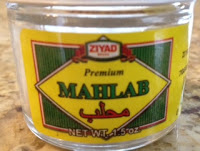
Hi Everyone,
Reader Debbie Boyadjian, wrote:.
“I am searching the net for a recipe for a special kind of halva that is made to celebrate Soorp Sarkis. I am a Canadian married to an Armenian and enjoy cooking very much. I am so happy that I have found your blog. My mother in law has been a great help in teaching me different things over the years, but this is one recipe that she does not have.
My children’s godfather is wanting to eat this sweet, but the only person who made this for him has passed away. Any help you can give would be greatly appreciated.”
While I am currently investigating leads on where to find this recipe, I thought I’d ask my loyal readers – just in case any of you have it, or know where to find it.
Any help in procuring this recipe for Debbie would be greatly appreciated!
**************************************************************
Debbie, this is what I’ve been able to find so far. If this isn’t what you’re searching for, the hunt will continue. READ STORY and RECIPE BELOW.
Soorp (St.) Sarkis Halvah
When reader Debbie Boyadjian asked if I could locate a recipe called “Soorp (St.) Sarkis Halvah”, I had no idea what paths I’d have to cross to get it.
The first thing I did was Google the recipe name. I found an article stating that a recipe by that name was in a cookbook called, ”Landing on Ararat”. The cookbook was created as a fundraiser for The Ararat Home of Los Angeles in – or around- 1996. The information given mentioned that the halvah recipe was submitted by Vanda Mazmanian, who specified ”that the sugar be measured in Armenian coffee cups.”
St. Sarkis Halvah is a confection that is served on St. Sarkis Day (celebrated on January 30th this year). According to Hermig Janoyan, it is “pale in color, and as chewy and nutty as nougat. It’s embedded with sesame seeds and comes in two shapes – flat squares or rectangles, or rolls with a walnut stuffing.”
The article also stated that “Janoyan, who researched the chapter on Armenian feast days, explains that engaged girls and brides fast for a couple of days at this time, then are honored at a feast at which the halvah is presented on a tray along with fruit that conceals a gift of gold jewelry.”
With a history like that, I was determined to find this recipe. But how? I e-mailed the Ararat Home of LA to see if the cookbook was still available. While waiting to hear back, it occurred to me that a family friend, Madeline Eskegian, of Pacific Palisades, CA, might know. Her mother resided at that home years ago, so I thought perhaps that Madeline would have the cookbook.
Alas, no, but, her friend did!
Madeline was kind enough to get Vanda Mazmanian’s recipe for Soorp (St.) Sarkis Halvah for me. It’s like no other halvah recipe I’ve ever seen!
St. Sarkis Halvah
Yield: 40 pieces
4 (Armenian coffee) cups of sugar
4 Tbsp. Marshmallow creme (sold in jars; can be found in most grocery stores)
1 Tbsp. Fresh lemon juice
3 Tbsp. Water
1 tsp. Orange blossom water, optional
2 lbs sesame seeds
walnuts – either halved or coarsely chopped
Directions:
1. Boil the water, lemon juice, marshmallow creme, orange blossom water (if using) and sugar until mixture begins to change color. Don’t let it turn brown. Remove from heat and cool slightly.
2. Place a small pile of sesame seeds on table. Make a small hole in the middle of the seeds. Pour 1 tbsp. Sugar mixture into hole. Cover hole with additional seeds.
3. Lightly roll with rolling pin to flatten. Place a walnut half – or a little chopped walnut- in center of flattened mixture. Wrap flattened sugar-sesame mixture around walnuts.
4. Slice off each end to make a rectangular shape. Continue to do this until all ingredients are used.
**Sugar mixture can be reheated if it thickens while working.




wow. what a detective job, Robyn. But what do you guess was the authentic ingredient for which "marshmallow creme" is the substitute? I'm not Armenian, but I'm pretty sure marshmallow creme wasn't a staple in the local market. Your best guess?
Well Bonnie,
That's one thing I haven't quite figured out yet. I'm hoping someone sends in another version of this recipe, just to compare.
Hello, I'm from Lebanon,I think the substitute is called in Arabic SHELISH HALAWA this is a root of a kind of plant, it is sold at the market where they sell spices and herbs.
Thank you so much for the information. I'll look for it the next time I'm at the Middle Eastern store.
ground ginger is the secret missing ingredient you only need a very small amount tip of tsp,
you can find ground ginger in any supermarket it need not be middle eastern store.
A hint of ground ginger? Sounds delicious; thanks for the tip!
This time "you" will be famous for making the best Soorp Sarkis Halva! Enjoy and please let me know if you agree that the ginger really does it!
OMG perfect! Ready for this weekend. Great flavor with ground ginger thank you!!!
Check out another recipe for St. Sarkis Halva. This one comes from Zee Sahakian.
http://thearmeniankitchen.com/2011/02/st-sarkis-day-armenian-valentines-day.html
The original ingredient for the marshmallow creme might have been Naatife- the marshmallow creme-like confection that is put on karabiche cookies
Thank you, Yervant. Are Naatife and karabiche cookies commonly found in Middle Eastern stores?
Yes, you can usually find them in Middle Eastern bakeries- definitely in Montreal and Toronto. Karabiche are similar to mamoul, but they tend to be longer. The ingredient used to make the naatife foamy is sometimes called "soaptree". Alice Bezjian's The Complete Armenian Cookbook has a recipe for it, in which she gives the Turkish and Arabic names for this plant. Here is an article that talks a bit about it: http://articles.latimes.com/1994-12-01/food/fo-3736_1_soapwort-root
Yervant,
Thank you for this information. I have the Alice Bezjian cookbook you mentioned, so I looked up the Karabiche recipe which she calls 'Karabige'. She goes into great detail on the preparation of the creme to be served with the cookie – including soaking a piece of soap tree for 10 hours. What a process! No wonder marshmallow cream is used instead by so many.